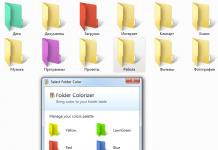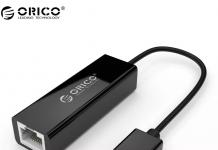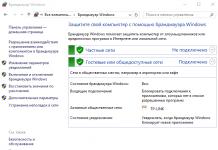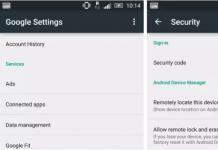General characteristics
Smartphone type Operating system Android Case Type Classic Control Touch Buttons Number of SIM cards 2 SIM card type micro SIM Multi-SIM mode variable Weight 130 g Dimensions (WxHxD) 66.7x134.5x9.88 mmScreen
Screen type color, touch Type touch screen multitouch, capacitive Diagonal 4.5 inches. Image size 960x540 Number of pixels per inch (PPI) 245 Aspect Ratio 16:9 Automatic screen rotation eatMultimedia features
Number of main (rear) cameras 1 Resolution of the main (rear) camera 5 MP Functions of the main (rear) camera autofocus Video recording yes (MP4) Max. video resolution 1920x1080 Front-camera yes, 0.3 MP Audio MP3, AAC, WAV, WMA, stereo speakers, FM radio Headphone jack 3.5mmConnection
Standard GSM 900/1800/1900, 3G Interfaces Wi-Fi, Bluetooth 4.0, USB Geopositioning A-GPS, GLONASS, GPS DLNA support eatMemory and processor
Processor 1200 MHz Number of processor cores 4 Built-in memory 4 GB Volume random access memory 1 GB Memory card slot Yes, up to 64 GBNutrition
Battery type Li polymer Battery capacity 2100 mAh Removable battery Talk Time 11.2 h Standby time 497 h Charging connector type micro USBOther features
Speakerphone(built-in speaker) have voice dialing control, voice control Flight mode yes Light sensors, proximity Flashlight yesInformation about the make, model, and alternative names of a particular device, if any.
Design
Information about the dimensions and weight of the device, presented in different units of measurement. Used materials, suggested colors, certificates.
| Width Width information refers to the horizontal side of the device in its standard orientation during use. | 66.7 mm (millimeters) 6.67 cm (centimeters) 0.22 ft 2.63in |
| Height Height information refers to the vertical side of the device in its standard orientation during use. | 134.5 mm (millimeters) 13.45 cm (centimeters) 0.44ft 5.3in |
| Thickness Information about the thickness of the device in different units measurements. | 9.88 mm (millimeters) 0.99 cm (centimeters) 0.03 ft 0.39in |
| Weight Information about the weight of the device in different units of measurement. | 130 g (grams) 0.29 lbs 4.59oz |
| Volume Approximate volume of the device, calculated from dimensions provided by the manufacturer. Refers to devices with the shape of a rectangular parallelepiped. | 88.63 cm³ (cubic centimeters) 5.38 in³ (cubic inches) |
| Colors Information about the colors in which this device is offered for sale. | The black White Red |
SIM card
The SIM card is used in mobile devices to store data that certifies the authenticity of mobile service subscribers.
Mobile networks
A mobile network is a radio system that allows multiple mobile devices to communicate with each other.
Mobile technologies and data rates
Communication between devices in mobile networks is carried out through technologies that provide different data rates.
Operating system
The operating system is the system software that manages and coordinates the operation of the hardware components in the device.
SoC (System on a Chip)
System on a chip (SoC) includes all the most important hardware components of a mobile device in one chip.
| SoC (System on a Chip) System on a chip (SoC) integrates various hardware components such as processor, GPU, memory, peripherals, interfaces, etc., as well as the software necessary for their operation. | Qualcomm Snapdragon 200 MSM8225Q |
| Technological process Information about the technological process by which the chip is made. The value in nanometers measures half the distance between the elements in the processor. | 45 nm (nanometers) |
| Processor (CPU) The main function of the processor (CPU) of a mobile device is the interpretation and execution of instructions contained in software applications. | ARM Cortex-A5 |
| Processor bit depth The bit depth (bits) of a processor is determined by the size (in bits) of registers, address buses, and data buses. 64-bit processors have higher performance than 32-bit processors, which, in turn, are more productive than 16-bit processors. | 32 bit |
| Instruction Set Architecture Instructions are commands by which the software sets/controls the operation of the processor. Information about the instruction set (ISA) that the processor can execute. | ARMv7 |
| Second level cache (L2) L2 (level 2) cache is slower than L1, but instead has a larger capacity to allow caching more data. It, like L1, is much faster than system memory (RAM). If the processor does not find the requested data in L2, it continues to look for it in the L3 cache (if available) or RAM. | 1024 KB (kilobytes) 1 MB (megabytes) |
| Number of processor cores The processor core executes program instructions. There are processors with one, two or more cores. Having more cores increases performance by allowing multiple instructions to be executed in parallel. | 4 |
| Processor clock speed The clock speed of a processor describes its speed in terms of cycles per second. It is measured in megahertz (MHz) or gigahertz (GHz). | 1200 MHz (megahertz) |
| Graphics Processing Unit (GPU) The graphics processing unit (GPU) handles calculations for various 2D/3D graphics applications. IN mobile devices it is used most often by games, consumer interface, video applications, etc. | Qualcomm Adreno 203 |
| The amount of random access memory (RAM) Random access memory (RAM) is used by the operating system and all installed applications. Data stored in RAM is lost when the device is turned off or restarted. | 1 GB (gigabytes) |
| Type of random access memory (RAM) Information about the type of random access memory (RAM) used by the device. | LPDDR2 |
Built-in memory
Each mobile device has a built-in (non-removable) memory with a fixed amount.
Memory cards
Memory cards are used in mobile devices to increase the storage capacity for storing data.
Screen
The screen of a mobile device is characterized by its technology, resolution, pixel density, diagonal length, color depth, etc.
| Type/technology One of the main characteristics of the screen is the technology by which it is made and on which the image quality of information directly depends. | TFT |
| Diagonal For mobile devices, the screen size is expressed in terms of its diagonal length, measured in inches. | 4.5in 114.3 mm (millimeters) 11.43 cm (centimeters) |
| Width Approximate Screen Width | 2.21in 56.04 mm (millimeters) 5.6 cm (centimeters) |
| Height Approximate Screen Height | 3.92in 99.62 mm (millimeters) 9.96 cm (centimeters) |
| Aspect Ratio The ratio of the dimensions of the long side of the screen to its short side | 1.778:1 16:9 |
| Permission Screen resolution indicates the number of pixels vertically and horizontally on the screen. More a high resolution means sharper image detail. | 540 x 960 pixels |
| Pixel Density Information about the number of pixels per centimeter or inch of the screen. Higher density allows information to be shown on the screen in clearer detail. | 245 ppi (pixels per inch) 96ppm (pixels per centimeter) |
| Color depth Screen color depth reflects the total number of bits used for the color components in a single pixel. Information about the maximum number of colors the screen can display. | 24 bit 16777216 flowers |
| Screen area Approximate percentage of screen space on the front of the device. | 62.43% (percentage) |
| Other characteristics Information about other functions and features of the screen. | capacitive Multitouch |
Sensors
Different sensors perform different quantitative measurements and convert physical indicators into signals that are recognized by the mobile device.
rear camera
The main camera of a mobile device is usually located on its rear panel and can be combined with one or more additional cameras.
| Sensor type Information about the type of camera sensor. Some of the most widely used sensor types in mobile device cameras are CMOS, BSI, ISOCELL, etc. | CMOS BSI (backside illumination) |
| Sensor size Information about the size of the photosensor used in the device. Typically, cameras with a larger sensor and lower pixel density offer more high quality images despite the lower resolution. | 3.67 x 2.76 mm (millimeters) 0.18in |
| Pixel size Pixels are usually measured in microns. Larger pixels are able to capture more light and therefore provide the best shooting in low light and wider dynamic range than smaller pixels. On the other hand, smaller pixels allow higher resolution while maintaining the same sensor size. | 1.416 µm (micrometers) 0.001416 mm (millimeters) |
| crop factor The crop factor is the ratio between the size of a full-frame sensor (36 x 24mm, equivalent to a frame of standard 35mm film) and the size of the device's photosensor. The number shown is the diagonal ratio of the full-frame sensor (43.3 mm) and the photosensor specific device. | 9.42 |
| Svetlosila Luminosity (also known as f-stop, aperture, or f-number) is a measure of the size of a lens aperture that determines the amount of light that enters the sensor. The lower the f-number, the larger the aperture and the more light reaches the sensor. Usually, the number f is indicated, which corresponds to the maximum possible aperture of the aperture. | f/2 |
| Focal length Focal length indicates the distance in millimeters from the sensor to the optical center of the lens. The equivalent focal length (35mm) is the focal length of a mobile device camera that is equal to the focal length of a 35mm full-frame sensor that would achieve the same angle of view. It is calculated by multiplying the actual focal length of the mobile device's camera by the crop factor of its sensor. The crop factor can be defined as the ratio between the 35mm diagonals of a full-frame sensor and a mobile device sensor. | 2.97 mm (millimeters) 28 mm (millimeters) *(35 mm / full frame) |
| Flash type The rear (rear) cameras of mobile devices mainly use LED flashes. They can be configured with one, two or more light sources and vary in shape. | LED |
| Image resolution One of the main characteristics of cameras is resolution. It represents the number of horizontal and vertical pixels in an image. For convenience, smartphone manufacturers often list resolution in megapixels, giving an approximate number of pixels in millions. | 2592 x 1944 pixels 5.04 MP (megapixels) |
| Video Resolution Information about the maximum video resolution that the camera can record. | 1920 x 1080 pixels 2.07 MP (megapixels) |
| Video recording speed (frame rate) Information about the maximum recording rate (frames per second, fps) supported by the camera when maximum resolution. Some of the most basic video recording speeds are 24 fps, 25 fps, 30 fps, 60 fps. | 30 fps (frames per second) |
| Characteristics Information about additional software and hardware features of the rear (rear) camera. | autofocus Burst shooting digital zoom Digital Image Stabilization geo tags panoramic shooting HDR shooting Touch focus Face recognition ISO setting Self-timer Scene Selection Mode Macro mode |
Front-camera
Smartphones have one or more front cameras of various designs - a pop-up camera, a PTZ camera, a cutout or hole in the display, a camera under the display.
Audio
Information about the type of speakers and audio technologies supported by the device.
Radio
The radio of the mobile device is a built-in FM receiver.
Location determination
Information about navigation and location technologies supported by the device.
WiFi
Wi-Fi is a technology that provides wireless communication for short distance data transmission between different devices.
Bluetooth
Bluetooth is a standard for secure wireless data transfer between different types of devices over short distances.
USB
USB (Universal Serial Bus) is an industry standard that allows different electronic devices to communicate.
Headphone jack
This is an audio connector, which is also called an audio jack. The most widely used standard in mobile devices is the 3.5mm headphone jack.
Connecting devices
Information about other important connection technologies supported by the device.
Browser
A web browser is a software application for accessing and viewing information on the Internet.
Video file formats/codecs
Mobile devices support various video file formats and codecs, which store and encode/decode digital video data, respectively.
Battery
Mobile device batteries differ from each other in their capacity and technology. They provide the electrical charge they need to function.
| Capacity The capacity of a battery indicates the maximum charge it can store, measured in milliamp-hours. | 2100 mAh (milliamp-hours) |
| Type The type of battery is determined by its structure and, more specifically, by the chemicals used. Exist different types batteries, with lithium-ion and lithium-ion polymer batteries most commonly used in mobile devices. | Li-polymer (Li-polymer) |
| Talk time 2G Talk time in 2G is the period of time during which the battery charge is completely discharged during a continuous conversation in a 2G network. | 12 hours 50 minutes 12.8 h (hours) 769.8 min (minutes) 0.5 days |
| 2G standby time The 2G standby time is the amount of time it takes for the battery to fully discharge when the device is in stand-by mode and connected to a 2G network. | 440 h (hours) 26400 min (minutes) 18.3 days |
| 3G talk time Talk time in 3G is the period of time during which the battery is completely discharged during a continuous conversation in a 3G network. | 12 hours 50 minutes 12.8 h (hours) 769.8 min (minutes) 0.5 days |
| 3G standby time The 3G standby time is the amount of time it takes for the battery to fully discharge when the device is in stand-by mode and connected to a 3G network. | 440 h (hours) 26400 min (minutes) 18.3 days |
| Characteristics Information about some additional features of the device's battery. | Removable |
Specific Absorption Rate (SAR)
SAR levels refer to the amount of electromagnetic radiation absorbed by the human body while using a mobile device.
| SAR level for head (EU) The SAR level indicates the maximum number electromagnetic radiation that the human body is exposed to when holding a mobile device next to the ear in a conversation position. In Europe, the maximum permissible value The SAR for mobile devices is limited to 2 W/kg per 10 grams of human tissue. This standard has been established by CENELEC in accordance with IEC standards following the 1998 ICNIRP guidelines. | 0.525 W/kg (watt per kilogram) |
| Head SAR (US) The SAR level indicates the maximum amount of electromagnetic radiation that the human body is exposed to when holding a mobile device near the ear. Maximum value used in the US is 1.6 W/kg per gram of human tissue. Mobile devices in the US are controlled by the CTIA and the FCC conducts tests and sets their SAR values. | 1.12 W/kg (watt per kilogram) |
| Body SAR (US) The SAR level indicates the maximum amount of electromagnetic radiation that the human body is exposed to when holding a mobile device at hip level. The highest acceptable SAR value in the US is 1.6 W/kg per gram of human tissue. This value is set by the FCC, and the CTIA controls whether mobile devices comply with this standard. | 0.471 W/kg (watt per kilogram) |
3G, Android, 4.50", 960x540, 4GB, 130g, 5MP camera, Bluetooth
MAIN SPECIFICATIONS
Nutrition
Battery capacity: 2100 mAh Battery type: Li-polymer Battery: removable Talk time: 11.2 h Standby time: 497 hAdditional Information
Announcement date: 2013-11-27General characteristics
Type: smartphone Weight: 130 g Control: touch buttons Case type: classic Number of SIM cards: 2 Multi-SIM mode: variable Dimensions (WxHxD): 66.7x134.5x9.88 mm SIM card type: micro SIM Platform: AndroidScreen
Screen type: color, touch screen Type of touch screen: multi-touch, capacitive Diagonal: 4.5 inches. Image size: 960x540 Pixels per inch (PPI): 245 Auto screen rotation: yesMultimedia features
Camera: 5 megapixels, built-in flash Camera functions: auto focus Movie recording: Yes (MP4) Max. video resolution: 1920x1080 Front camera: yes, 0.3 million pixels. Audio: MP3, AAC, WAV, WMA, stereo speakers, FM radio Headphone jack: 3.5mmConnection
Interfaces: Wi-Fi, Bluetooth 4.0, USB Standard: GSM 900/1800/1900, 3G DLNA support: yes Satellite navigation: GPS/GLONASS A-GPS system: yesMemory and processor
Processor: 1200 MHz Number of processor cores: 4 Built-in memory: 4 GB RAM: 1 GB Memory card support: microSD (TransFlash), up to 64 GB Memory card slot: yes, up to 64 GBOther features
Control: voice dialing, voice control Sensors: ambient light, proximity Speakerphone (built-in speaker): yes Airplane mode: yes2 years ago
Design, bright screen, good sound(two speakers), two sim cards.
2 years ago
The screen is good. The assembly is excellent. Dead pixels are not seen. Stereo speakers are not bad Wants to look nice and premium
2 years ago
Appearance -Speaker (in both directions) -control -durable case (fell several times on the corners), but one fall "flat" was enough for the screen to go like a web.
2 years ago
Size, thickness (IMHO) - Screen (bright, good viewing angles) - Application speed (I don't play games) - Battery (enough for a day with constantly on mobile internet, wi-fi, a connected bluetooth headset, sometimes a wi-fi router). - Speaker location (both front)
2 years ago
The price and perhaps that's where the benefits end.
2 years ago
Design, speed, SOUND!!!, build quality, shell (sense)
2 years ago
loud speaker. Normal screen. Essentially a clone NTS One S. But loses in performance.
2 years ago
Used for about 6 months. fast enough, does not slow down. The battery keeps about 1.5 days with active calls. The sound is thunderous and clear stereo.
2 years ago
design, matte cover
2 years ago
Appearance
2 years ago
Camera, software, few internal memory, approximately 3/4 of which is occupied by default, while applications can only be installed on the phone. These are only the main shortcomings, there are still a bunch of small ones, which, taken together, noticeably spoil the impressions of using this phone.
2 years ago
Laguchaya standard firmware, which I can't reflash.
The amount of built-in memory is extremely small.
2 years ago
The biggest drawback is that there is not enough built-in memory (4GB) even for the necessary applications, not to mention games, photos, etc., applications are not installed on a removable flash drive.
2 years ago
Doesn't play well with my Jabra Stealth headset (previous HTC ONE V worked flawlessly with it)
- Light indicator (during the day it is practically useless - very small)
- Little built-in memory
2 years ago
Pretty weak battery.
obsolete android version 4.2.2
Prohibition to install an application on a memory card
Small amount of built-in memory for installing applications.
Intermittent freezes and reboots.
2 years ago
Until I discovered
2 years ago
Built-in memory is not enough permanently. The operating system is packed to capacity with Google services. It is not possible to remove them without root. There is not enough memory so much that applications cannot be updated and it is not possible to free it. Moreover, the minimum number of programs is installed in the phone. There are basically no games.
2 years ago
Uranil on the pavement, you have to change the screen module, which costs about 100 euros (in Moldova). The whole screen is not broken, there is some kind of protection. But the screen module turned out to be weaker than the screen itself. The memory is very small, at 4GB operating + update takes about 2-3 GB, constant notification that there is not enough memory.
2 years ago
low memory, camera (few colors)
2 years ago
The HTC Desire 601 smartphone appeared on the market almost immediately after the popular HTC Desire 600 Dual SIM model, in connection with which the desire arose immediately (that is, desire) to compare both models.
Looking ahead, we note that the devices really have similarities. However, if you do not need to have 2 SIM cards in your phone, but the speed and duration of the device are more important, HTC Desire 601 becomes a worthy object for the right choice.
Specifications
The device is equipped with a large 4.5 inch TFT screen with a resolution of 960x540 pixels. In this way, it is similar to its "practically namesake", although upon closer examination we will notice the difference between the applied display manufacturing technologies - HTC Desire 600 uses an IPS display (a little more about the difference in technologies - in comparison Nokia Lumia 820 and 920).
Also common characteristic 2 smartphones (and at the same time their pride) is the presence of 2 stereo speakers, equipped with separate amplifiers (the same advantage is also flagship smartphones HTC One).

A definite advantage HTC One 601 is the use of a more powerful graphics accelerator in it (Adreno 305, unlike Adreno 203 in the "six hundredth" model). This decision positions the novelty as a device more designed for "passing" modern games.
The speed of the smartphone is set by a 2-core Qualcomm Snapdragon 400 processor, which operates at a fairly "weak" frequency of 1.4 GHz. The size of the RAM is 1 GB.
Photo and video opportunities
The photo and video capabilities of the smartphone are quite interesting. The rear 5 megapixel camera with flash and autofocus is able to focus on faces and detect smiles. The size of the 1/4-inch matrix also determines the pixel size - 1.4 microns, which is even "bigger" than in the 41 megapixel Nokia Lumia 1020.Note automatic change flash level (5 values) depending on the distance to the subject, the presence of panoramic and slow motion video shooting.

proprietary technology HTC Zoe allows you to literally revive your photos and gallery.
Let's note the ability of HTC Desire 601 to record videos in high definition format at 1080p resolution and 30 fps (if you want even higher resolution, we suggest you get acquainted with Samsung Galaxy Note 3).
Additional front-camera, intended mainly for chatting, has a correspondingly modest VGA resolution (0.3 megapixels).

A few more numbers
For completeness HTC review Desire 601, let's add some more numbers.The smartphone has a built-in memory of 8 GB, there is a slot for memory cards micro SD, supports up to 64 GB.
Removable lithium polymer battery has a capacity of 2100 mAh, allowing you to communicate for more than 12 hours in 3G networks.
Dimensions of the device 134.5x66.7x9.9 mm, weight 130 g.

Video review HTC Desire 601
HTC Desire 601 Dual SIM
Towards the end of 2013, HTC introduced a two-card version of the smartphone in question.
The HTC Desire 601 Dual SIM model has the same screen and camera options as the HTC Desire 601, but does not support operation in 4th generation LTE networks.
Also new model does not have Gorilla Glass screen protection, has more modest built-in memory and has slightly different device speed parameters
Smartphone comparison
At the beginning of the article, we were going to compare HTC smartphones Desire 601 and HTC Desire 600 Dual SIM. It's time to do it in more detail. In this table, we will look at the differences between smartphones and compare their prices. |
HTC Desire 601 |
 HTC Desire 601 Dual SIM |  HTC Desire 600 Dual SIM |
| Screen Technology | TFT | TFT | IPS |
| Screen protection | Gorilla glass | - | - |
| CPU | 1.4 GHz, 2 cores | 1.2 GHz, 4 cores | 1.2 GHz, 4 cores |
| graphics accelerator | Adreno 305 | (no data) | Adreno 203 |
| Built-in memory, GB | 8 | 4 | 8 |
| LTE support | There is | - | - |
| Support 2 sim cards |
- | There is | There is | Main camera | 5 MP matrix 1/4 inch, pixel 1.4 µm |
5 MP matrix 1/4 inch, pixel 1.4 µm |
8 MP matrix 1/3.2 inch, pixel 1.4 microns |
| Video Resolution | 1080p | 1080p | 720r |
| Front-camera | 0.3MP | 0.3MP | 1.6MP |
| NFC support | - | - | There is |
| Battery, mAh | 2100 | 2100 | 1860 |



































